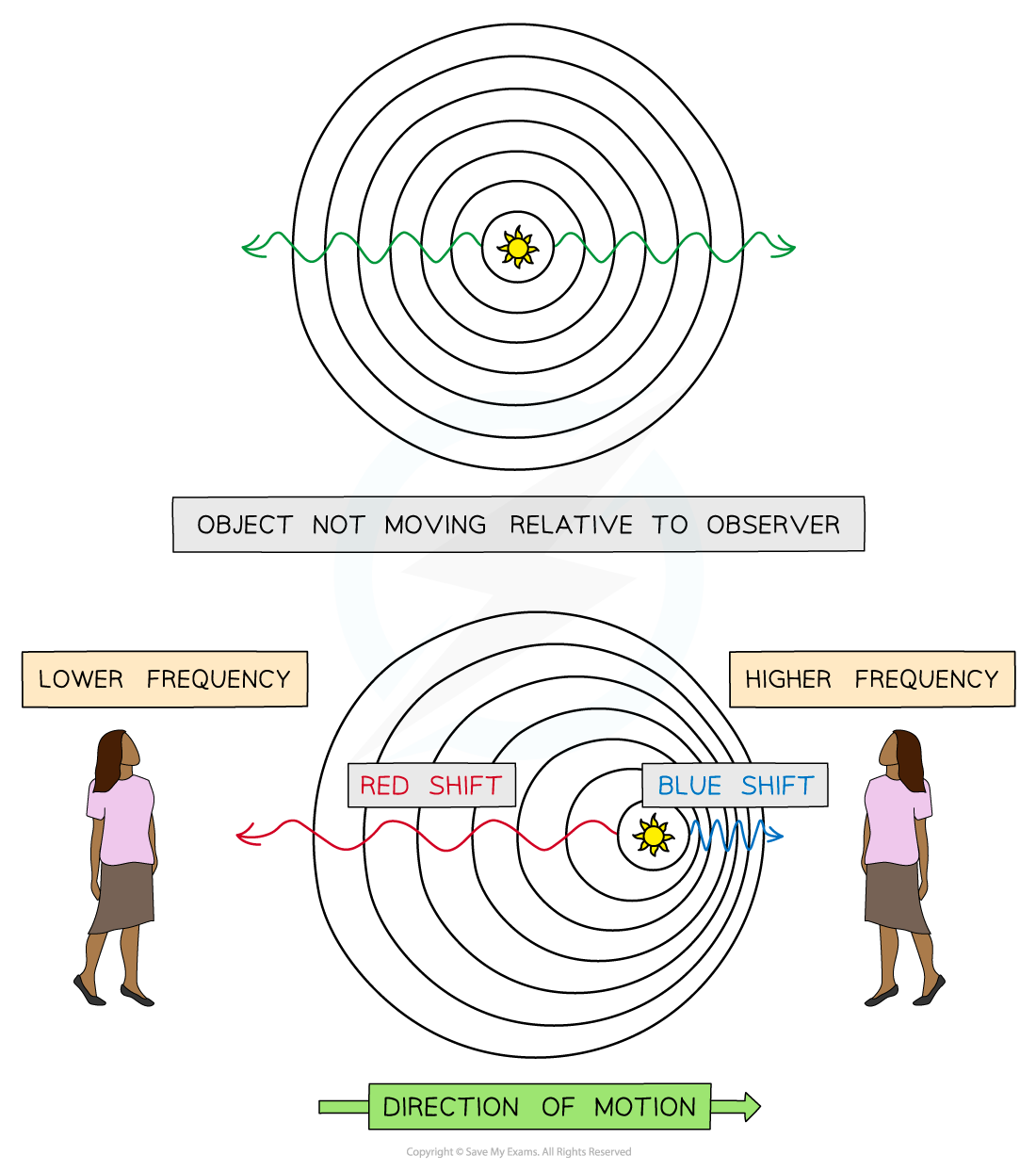Galactic Red-shift (Edexcel IGCSE Physics) : Revision Note
Learn about red shift for your IGCSE Physics exam. This revision note includes an explanation of red shift and how it provides evidence for an expanding universe
Did this video help you?
Galactic redshift
The Doppler effect affects all types of waves, including light
Light emitted from stars and galaxies will be at a certain wavelength in the visible part of the electromagnetic spectrum
If an object moves away from an observer the wavelength of light increases
This is known as redshift as the light moves towards the red end of the spectrum
The redshift definition is therefore:
The phenomenon of the wavelength of light appearing to increase when the source moves away from an observer
If an object moves towards an observer the wavelength of light decreases
This is known as blueshift as the light moves towards the blue end of the spectrum

Light from a star that is moving towards an observer will show blueshift and light from a star moving away from an observer will show redshift
An increase in wavelength (redshift) is a decrease in frequency and vice versa

The observer in front observes a blue shift, the observer behind observes a redshift
Examiner Tips and Tricks
You need to know that in the visible light spectrum red light has the longest wavelength and the smallest frequency compared to blue light which has a shorter wavelength and higher frequency

To help you to remember what happens to the wavelength and the frequency of an object as it moves further away, it is useful to think about how the sound of a motorbike would change as it travels away from you. As the motorbike travels away from you the pitch of the sound will become lower. This means the frequency of the sound is decreasing. If the frequency has decreased, the wavelength must also have increased. Don't get caught up on the redshift definition, but focus on the application of the phenomenon in different contexts.
The expanding Universe
Galactic redshift provides evidence for the Big Bang Theory and the expansion of the universe
The diagram below shows the light coming to us from a close object, such as the Sun, and the light coming to the Earth from a distant galaxy
Redshift diagram for a light spectrum

Comparing the light spectrum produced from the Sun and a distant galaxy. The spectral lines from the distant galaxy are redshifted.
Red shift provides evidence that the Universe is expanding because:
Red shift is observed when the spectral lines from the distant galaxy move closer to the red end of the spectrum
This is because light waves are stretched by the expansion of the universe so the wavelength increases (or frequency decreases)
This indicates that the galaxies are moving away from us
Light spectrums produced from distant galaxies are red shifted more than nearby galaxies
This shows that the greater the distance to the galaxy, the greater the redshift
This means that the further away a galaxy is, the faster it is moving away from the Earth
These observations imply that the universe is expanding and therefore support the Big Bang Theory

Graph showing the greater the distance to a galaxy, the greater the redshift

You've read 0 of your 5 free revision notes this week
Sign up now. It’s free!
Did this page help you?
